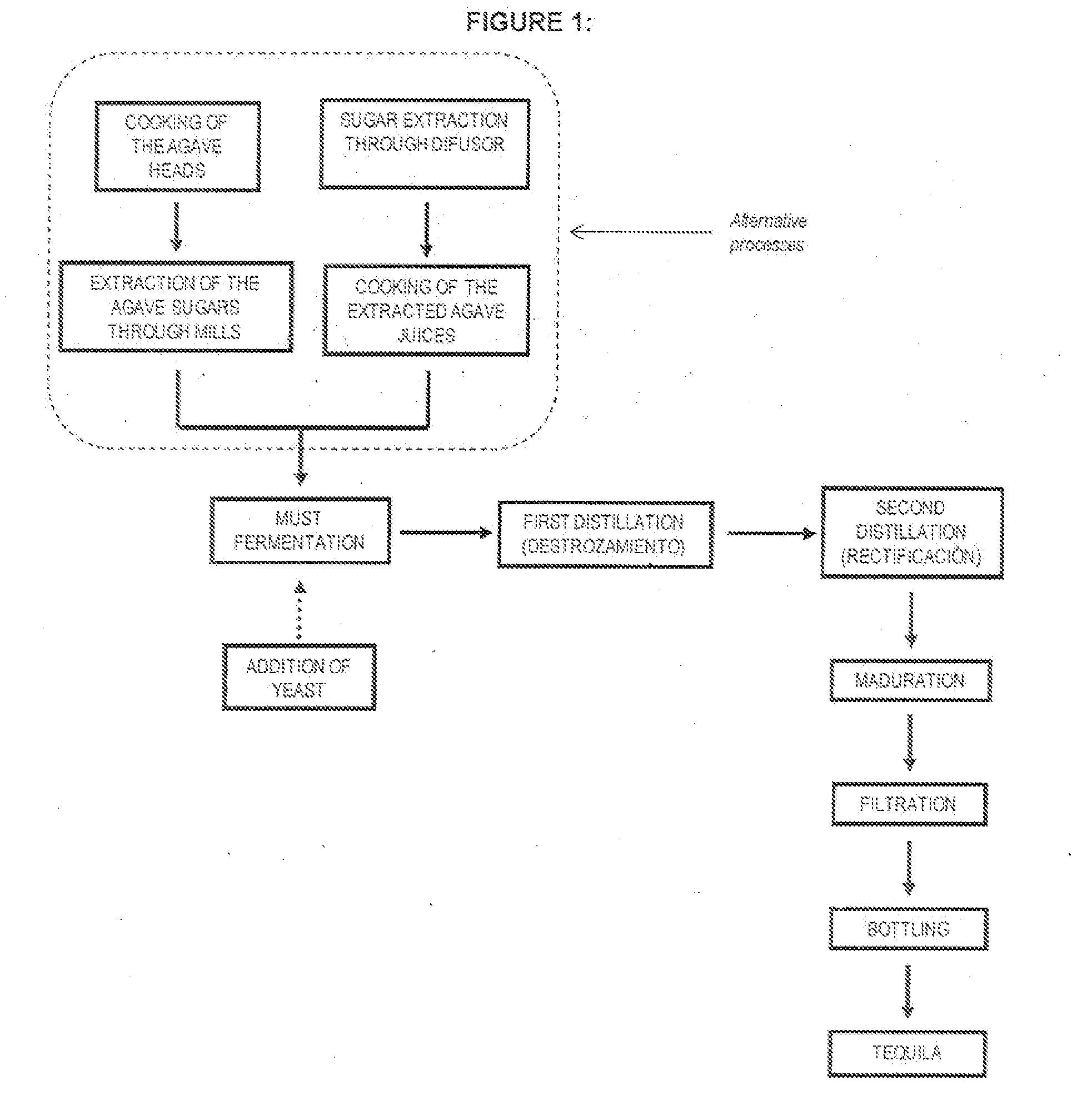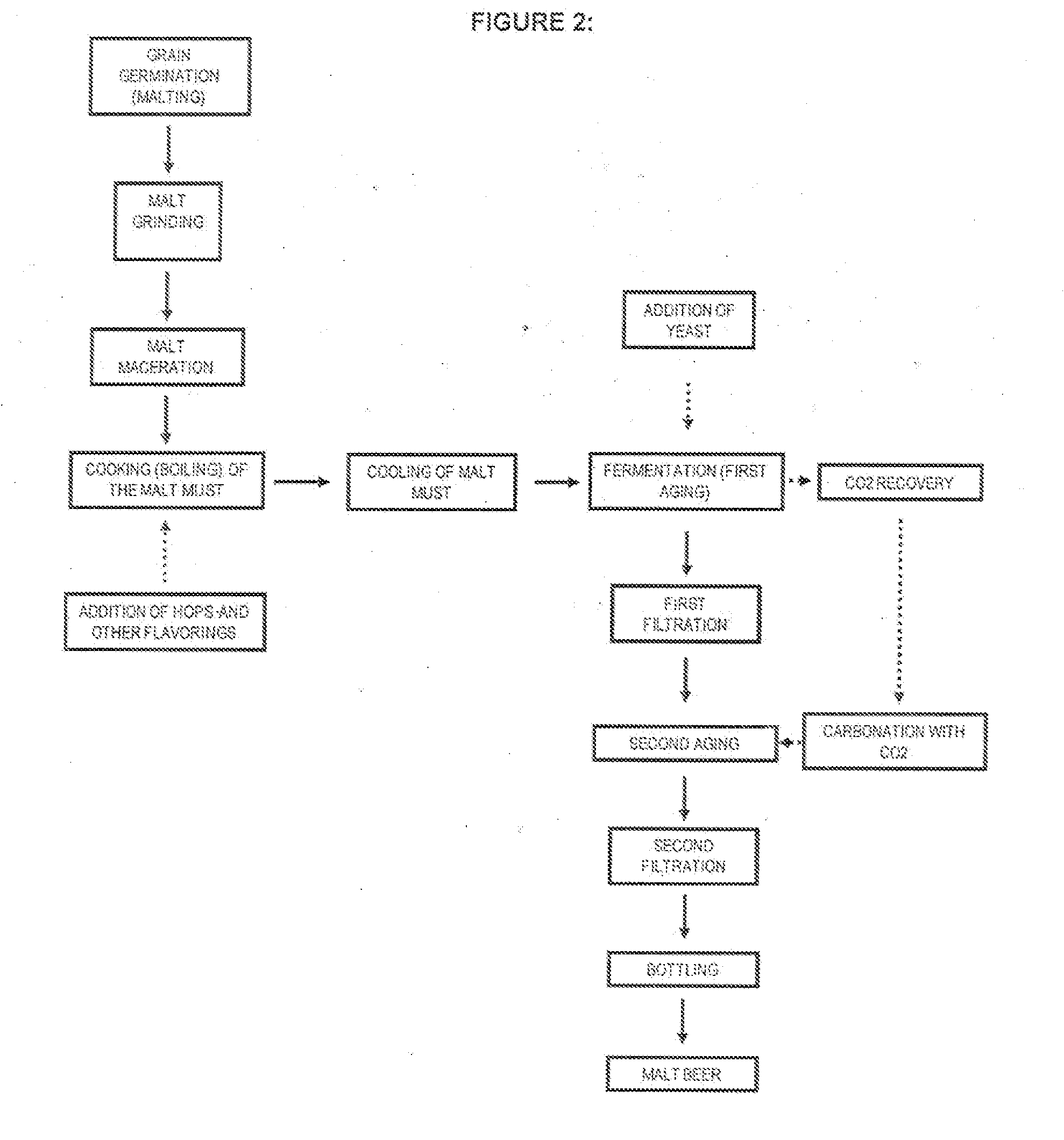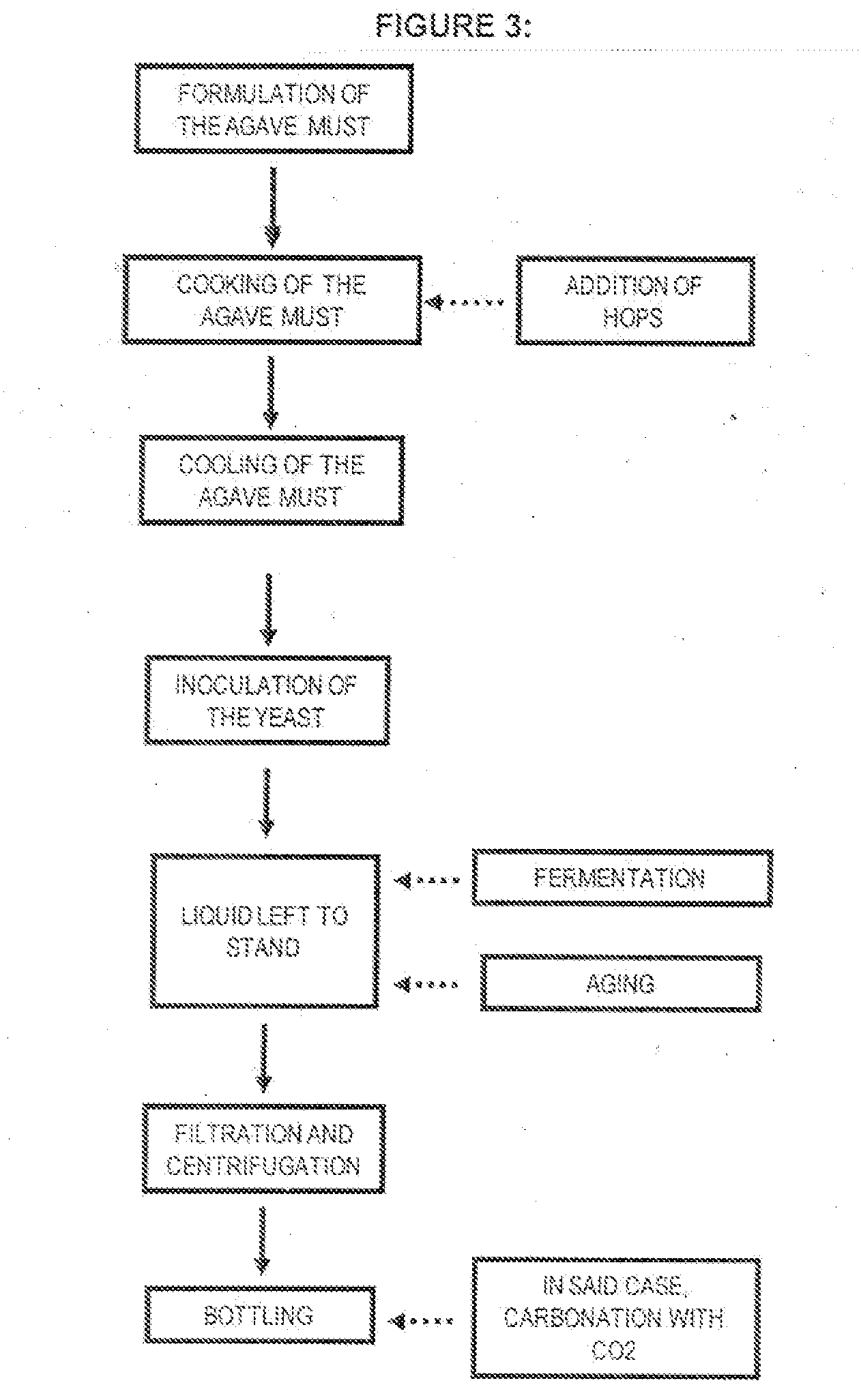Method of Producing an Agave-Based Beer-Type Alcoholic Drink
a technology of agave and alcoholic beverages, applied in the food industry, can solve the problems of not being attractive to the majority of consumers, being considered unpleasant and unsanitary, and limited the “pulque” market,
- Summary
- Abstract
- Description
- Claims
- Application Information
AI Technical Summary
Benefits of technology
Problems solved by technology
Method used
Image
Examples
Embodiment Construction
[0027]The substitution of the fermentable raw material is the main difference between this new “Agave Beer” and the traditional malt beer. However, the simple substitution of the raw material is not enough to obtain a final product with industrial application. Obtaining the “Agave Beer” depends on applying certain changes to the known process for producing traditional malt beer, as well as the modification of some parameters in certain stages of the process that are common among both. The modifications, both in the stages as well as in the parameters, in addition to the substitution of the main raw material are the result of an inventive activity that allows the final product to be adequate for true industrial application.
[0028]In the case of the “Agave Beer”, besides the must that contains the fermentable sugars mostly from Agave and water, other ingredients from traditional malt beer are also used: yeast and hops (or an extract of this). The change in the main source of fermentabl...
PUM
| Property | Measurement | Unit |
|---|---|---|
| temperature | aaaaa | aaaaa |
| temperature | aaaaa | aaaaa |
| temperature | aaaaa | aaaaa |
Abstract
Description
Claims
Application Information
 Login to View More
Login to View More - R&D
- Intellectual Property
- Life Sciences
- Materials
- Tech Scout
- Unparalleled Data Quality
- Higher Quality Content
- 60% Fewer Hallucinations
Browse by: Latest US Patents, China's latest patents, Technical Efficacy Thesaurus, Application Domain, Technology Topic, Popular Technical Reports.
© 2025 PatSnap. All rights reserved.Legal|Privacy policy|Modern Slavery Act Transparency Statement|Sitemap|About US| Contact US: help@patsnap.com



